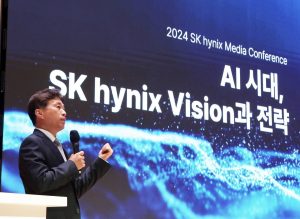News

Despite concerns that China’s low-cost AI model DeepSeek could disrupt the tech industry, SK hynix dismisses such fears. President and CEO Kwak Noh-jung sees it as a long-term driver of semiconductor demand and new opportunities, according to etnews and ZDNet. Kwak noted that though in the shor...
News

In the era of big data and AI, Compute Express Link (CXL) has emerged as the next-gen, high-speed standard, with memory giants eager to join the race. According to the bell, SK hynix is incorporating chiplet technology into its first in-house CXL controller, which will reportedly be manufactured by ...
News

According to a report from ijiwei, citing Business Korea, Micron Technology is set to begin mass production of its 12-stack HBM and will supply it to AI semiconductor giant NVIDIA. As highlighted by the report, Micron completed the development of its 12-stack HBM in September 2024 and has since s...
News

As NVIDIA collaborates closely with memory heavyweights on their latest HBM products for AI accelerators, the U.S. chip giant is said to be in talks with Samsung and SK hynix to push the commercialization of a next-gen memory technology called SOCAMM (System on Chip Advanced Memory Module), accordi...
News

According to a report from Korean Economic Daily, citing industry sources, SK hynix has initiated an urgent review of Chinese semiconductor Electronic Design Automation (EDA) software anticipating that the U.S. may impose restrictions on South Korean semiconductor firms using Chinese software. On...